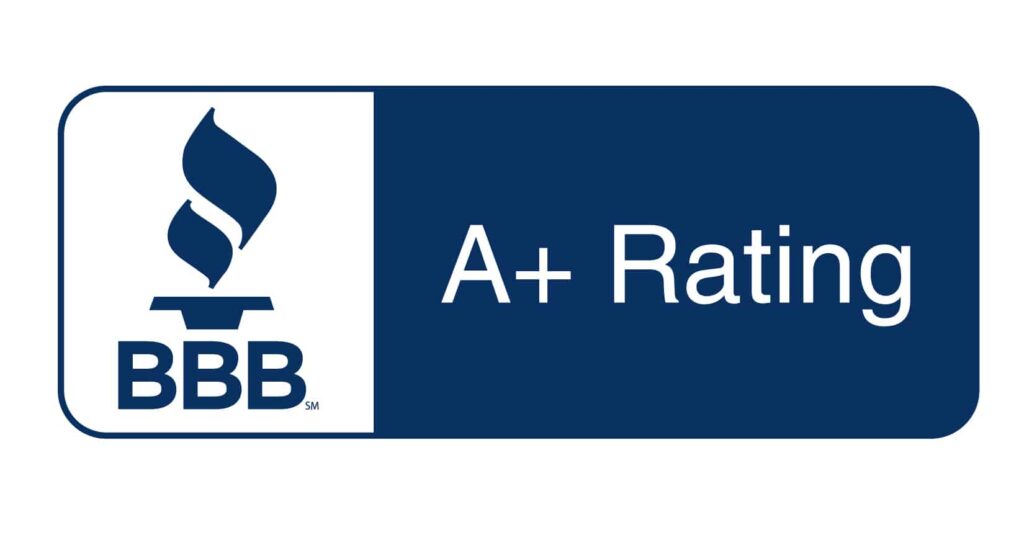A flat roof can be practical, but like all roofs, it’s vulnerable to wear and tear. Knowing when to tackle a simple roof repair versus when it’s time for a full replacement can save you time and money in the long run.
Are you noticing leaks, pooling water, or structural changes? Do you know what to do next?
In this post, we’ll walk you through clear signs of roof damage and help you decide whether minor fixes or a full replacement is the best option for a leaking roof or other concerns. Let’s get started!
Signs of Damage
Not all roof damage is easy to spot, especially on flat roofs, where water and debris can settle in sneaky ways. But keeping an eye out for signs early can help save you from major repairs or even a full replacement down the road. Let’s dive into some tell-tale signs to look for!
Visible Surface Issues
If you see blistering, bubbling, or cracking on the roofing membrane, your roof might be crying out for attention. A small patch of bubbles here and there may just need a quick roof repair, but if these signs cover a large part of the surface, it could indicate more extensive damage.
Think of it like a peeling paint job. If it’s only a corner, a touch-up will do, but if the whole wall is flaking, it might be time to repaint entirely. With common roofing materials, widespread issues usually mean the roof’s protective layer is compromised, which can lead to leaks and water damage. So, consider a roof replacement if these visible issues are all over – your roof will thank you for it!
Water-Related Problems
Water is a flat roof’s worst enemy, and even small drainage issues can cause big problems if left unchecked. Flat roofs should be designed with a slight roof pitch for water runoff, but when water sticks around too long, it’s often a red flag.
Pooling Water
Pooling, or standing water, is a sign that your roof isn’t draining properly. Ideally, water should drain within 48 hours of rainfall, but if you spot small ponds after that, your roof deck may be uneven, or there could be a drainage problem. Left unchecked, standing water can seep into the roofing material, leading to costly roof repairs or even a full replacement.
Leaks
Seeing water stains, discoloration, or mold on interior ceilings or walls? That’s your roof giving a shout for help.
Leaks are often the first sign of aging in roofing systems, especially for older materials like asphalt shingles. When leaks keep coming back, or if the roof is nearing the end of its life, it may be more practical to consider a roof replacement instead of frequent repairs. Taking quick action can save you a lot of stress and keep your home dry!
Looking for reliable residential roofing support? Impact Roofing offers professional services to handle all your roofing needs with quality and care.
Structural Concerns
Structural issues are the biggest red flags when it comes to flat roofs. These problems can seriously impact a roof’s integrity and, if left unattended, lead to more significant risks to your residential building.
Sagging
If you notice parts of your roof dipping or sagging, this could indicate long-term moisture accumulation. Water that lingers too long adds extra weight, and over time, it can impact the roof’s ability to hold its own weight. This is no small issue, as it could lead to extensive damage and high roof replacement costs if left untreated.
Buckling
Buckling happens when a roof starts to ripple, often due to foundational shifts in newer buildings. Buckling may look minor but can indicate that the roof is no longer securely anchored. This requires immediate attention from a roofing specialist. While some buckling may be manageable with roof repairs, more severe cases may point to deeper structural issues, making a full roof replacement a wise move.
Other Warning Signs
Beyond visible surface and structural issues, other signs can indicate your flat roof may need attention. Some warning signs might seem minor but can lead to larger issues if ignored.
- Damaged or Missing Flashing: Flashing around chimneys, vents, and other roof fixtures protects against leaks. If it’s damaged or missing, water can seep into vulnerable spots, increasing future roof repair costs.
- Exposed Undercoat: When the top roofing layer begins to lift or curl, the undercoat is exposed, which weakens overall protection. Over time, this can result in water damage and may lead to a full roof replacement.
- Increasing Energy Bills: Higher-than-usual energy bills could signal poor insulation from roof damage. If your residential building suddenly has issues maintaining temperature, a roof inspection can reveal if insulation repairs or replacement are needed to lower future costs.
Spotting these signs early can prevent costly repairs. This makes routine gutter cleaning and roof checks well worth the effort.
READ MORE: 16 Questions to Ask Your Contractor During Roofing Inspection Service
Repair or Replace?
When deciding between minor repairs or a full roof replacement, a few key factors can help make the choice easier. Sometimes, opting for smaller fixes will keep your roof going strong, while other times, a replacement is the best investment for the long haul.
Consider Repair If:
- Roof is Less Than 10 Years Old: Newer roofs are usually in good condition and can often be fixed without major overhauls. A few minor repairs are likely to keep it functioning well.
- Damage is in One Area: If issues are contained to a specific spot, like a leak around a vent, a targeted repair might do the trick. This can save time and money over replacing the entire roof.
- Issues Are Minor: Small tears, popped nails, or worn sealants are common problems that don’t usually require a full roof overhaul. Roofing contractors can typically address these with quick fixes.
Consider Replacement If:
- Roof Age is 20-25 Years: When a roof nears the 20-25-year mark, it typically reaches the end of its lifespan, even if it appears to be holding up. At this point, a full replacement is often more cost-effective than repeated repairs.
- Frequent, Costly Repairs: If you’re constantly patching up new issues, those minor repairs can add up fast. In cases where repairs are frequent, the total roof replacement cost might be a wiser long-term investment.
- Widespread Surface Damage: When damage spans across the roof, even a partial roof replacement might not suffice. A DIY roof replacement might be tempting, but extensive repairs are best handled by professionals.
- Persistent Leaks or Sagging: Chronic leaks and structural issues, like sagging, indicate that your roof’s foundational integrity may be compromised. Replacing the roof can ensure the underlying structure is solid and prevent future damage.
Cover Roof Replacement Expenses Wisely with These Tips
Deciding between repair and replacement can be challenging, but knowing what’s best for your roof keeps roofing costs manageable and your home protected.
If you’re considering repairs, assess the extent of the damage and consult a professional. For older roofs or frequent issues, a full roof replacement could be more cost-effective in the long run, potentially saving on repairs down the line.
With the right guidance, you’ll cover roof replacement needs while preserving your home’s value.
Impact Roofing specializes in reliable roof repair and replacement services, tailored to meet your specific needs and budget. Our team is dedicated to providing quality craftsmanship and expert advice, ensuring your home remains protected for years to come.




